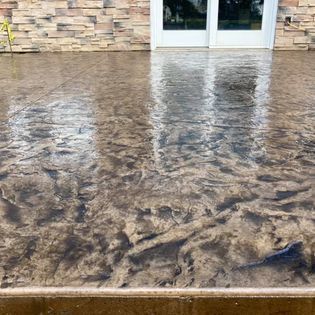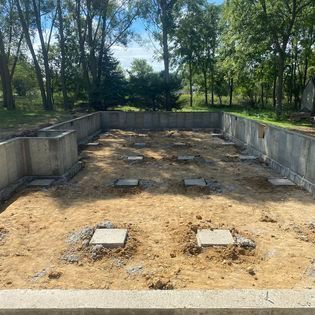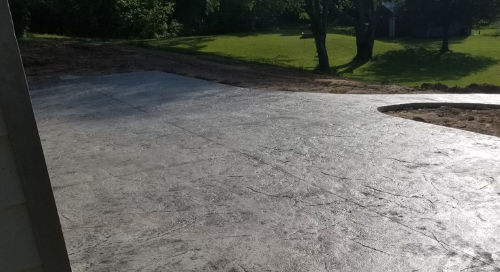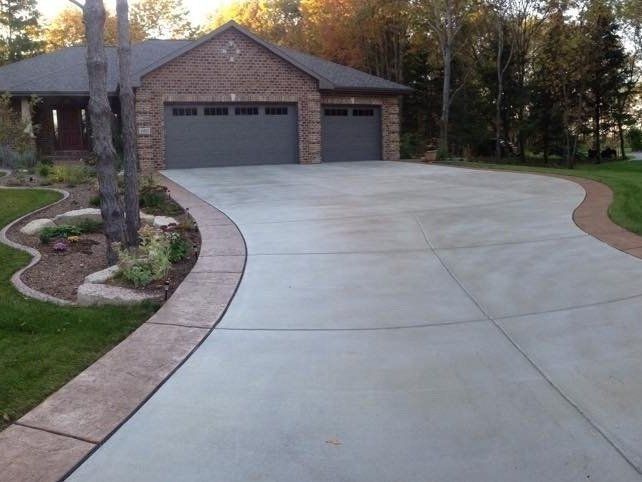Unleashing the Beauty of Stamped Concrete
Stamped Concrete: Patterns, Process, and Maintenance
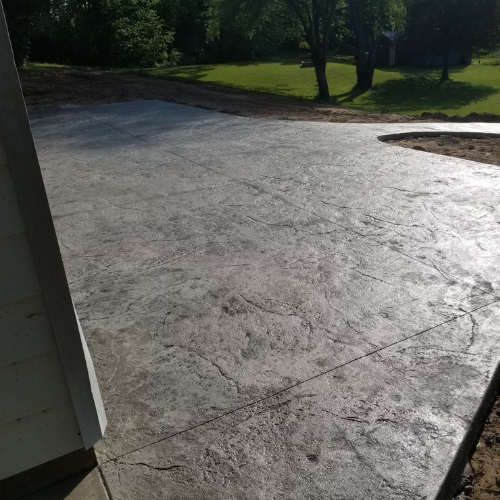
When it comes to enhancing the aesthetic appeal of your outdoor spaces, stamped concrete is a versatile and cost-effective option that can transform ordinary surfaces into stunning works of art. With a plethora of patterns to choose from, the stamping concrete process allows you to create unique and eye-catching designs. In this blog post, we will explore the various stamped concrete patterns available, delve into the process of stamping concrete, and offer essential care and maintenance tips to ensure your investment stands the test of time.
Stamped concrete offers an extensive range of patterns, each with its own distinctive charm. Here are a few popular options:
- Ashlar Slate: This pattern imitates the look of natural stone, providing a sophisticated and timeless appeal. It is perfect for patios, walkways, and pool decks.
- Cobblestone: Ideal for creating a rustic and old-world charm, cobblestone patterns add character to driveways, pathways, and courtyard areas.
- Herringbone Brick: With its interlocking design, herringbone brick patterns are reminiscent of classic brickwork. This pattern is often used to create stunning driveways and pathways.
- Wood Plank: Capture the warmth and elegance of wood with a stamped concrete wood plank pattern. It offers the beauty of wood without the maintenance hassles and is perfect for decks and outdoor living areas.
The stamping concrete process involves several steps to achieve the desired pattern and texture:
- Site Preparation: The existing ground surface is cleared and any material removed if needed. The area to be poured is then formed up to match the desired design, the forms are generally made with wood held by metal stakes. Once the area is formed the base material can be added and be compacted to proper grade. Any existing surfaces the new concrete will be poured in contact with such as other concrete surfaces, foundations or deck pillars will have expansion joint strips applied. Expansion joint material is generally foam or rubber strips. The expansion joint allows for the concrete to be poured to shift during the different seasons without coming in contact with the existing structures and potentially damaging either surface.
- Pouring and Leveling: The concrete is poured within the forms and leveled to ensure a smooth and even surface. If colored concrete was chosen for the project the color would be added to the concrete mix prior to being poured. Depending on the job site the concrete can be poured directly from the truck, brought from the truck to the site by concrete buggies or wheelbarrowed from the truck to the site.
- Stamping: Specialized stamps, typically made of polyurethane, are pressed onto the concrete surface to create the desired pattern. The stamps are carefully placed in a predetermined sequence to avoid any repetition. The amount of time between pouring and leveling to stamping will vary on the job size and weather.
- Texturing and Detailing: Additional tools are used to add texture and enhance the depth of the pattern. Detailing is done meticulously to ensure a realistic and visually appealing result.
- Curing and Sealing: The stamped concrete is left to cure for several days, and a protective sealer is applied to enhance its durability, resistance to stains, and color longevity. Sealer can also provide some different color options as well as levels of depth or gloss.
To preserve the beauty and longevity of your stamped concrete, regular care and maintenance are essential:
- Cleaning: Sweep or rinse the surface regularly to remove debris and prevent dirt buildup. Avoid using abrasive cleaning agents that may damage the sealer.
- Sealing: Reapply a high-quality sealer every few years to maintain the protective layer and enhance the concrete's resistance to stains and weathering.
- Avoid Chemicals: Steer clear of de-icing salts, harsh chemicals, and oil-based substances that can stain or deteriorate the concrete surface.
- Preventing Damage: Use mats or rugs in high-traffic areas to minimize wear and tear. Avoid dragging heavy objects across the surface to prevent scratches.
- Periodic Maintenance: Inspect the surface for any signs of damage or wear. Address any cracks or imperfections promptly to prevent further deterioration.
Stamped concrete offers an incredible opportunity to transform your outdoor spaces into stunning works of art. With a wide range of patterns to choose from, the stamped concrete process allows for endless creative possibilities. By following proper care and maintenance practices, you can ensure that your stamped concrete investment remains beautiful and durable for years to come. Waltz concrete can help you select the perfect pattern, and revel in the beauty of stamped concrete on your property!
